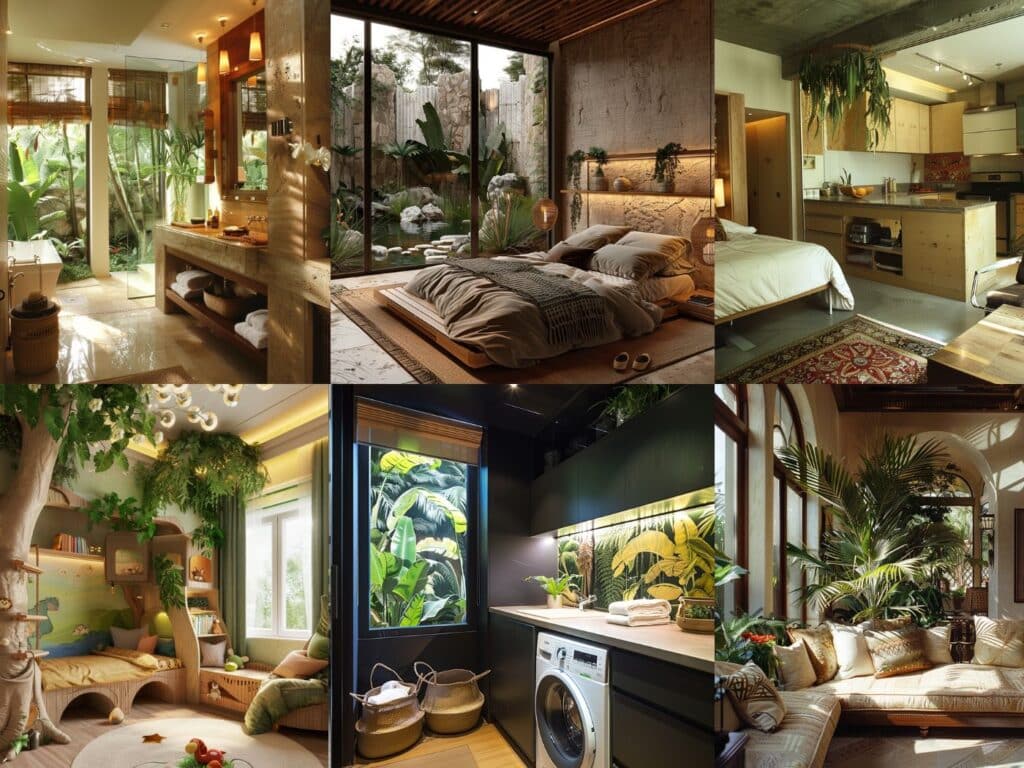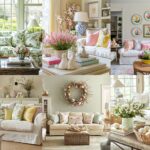Imagine stepping into your home and feeling instantly transported to a serene, lush garden. The Garden Oasis interior design trend offers just that—a perfect blend of nature’s tranquility with indoor comfort. If you’ve ever felt your living space lacks the refreshing ambiance you crave, this design approach may well be your ideal solution.
By incorporating natural elements like greenery, earthy textures, and organic materials, you can create a peaceful retreat right in your own home. Whether you’re looking to revamp an entire room or add subtle touches of nature throughout your space, this guide will help you transform any area into a calming sanctuary. Get ready to breathe new life into your interiors and experience the rejuvenating power of a Garden Oasis.
14 Garden Oasis Interior Design Ideas And Styles
#1. Garden Oasis Walk-in Closet
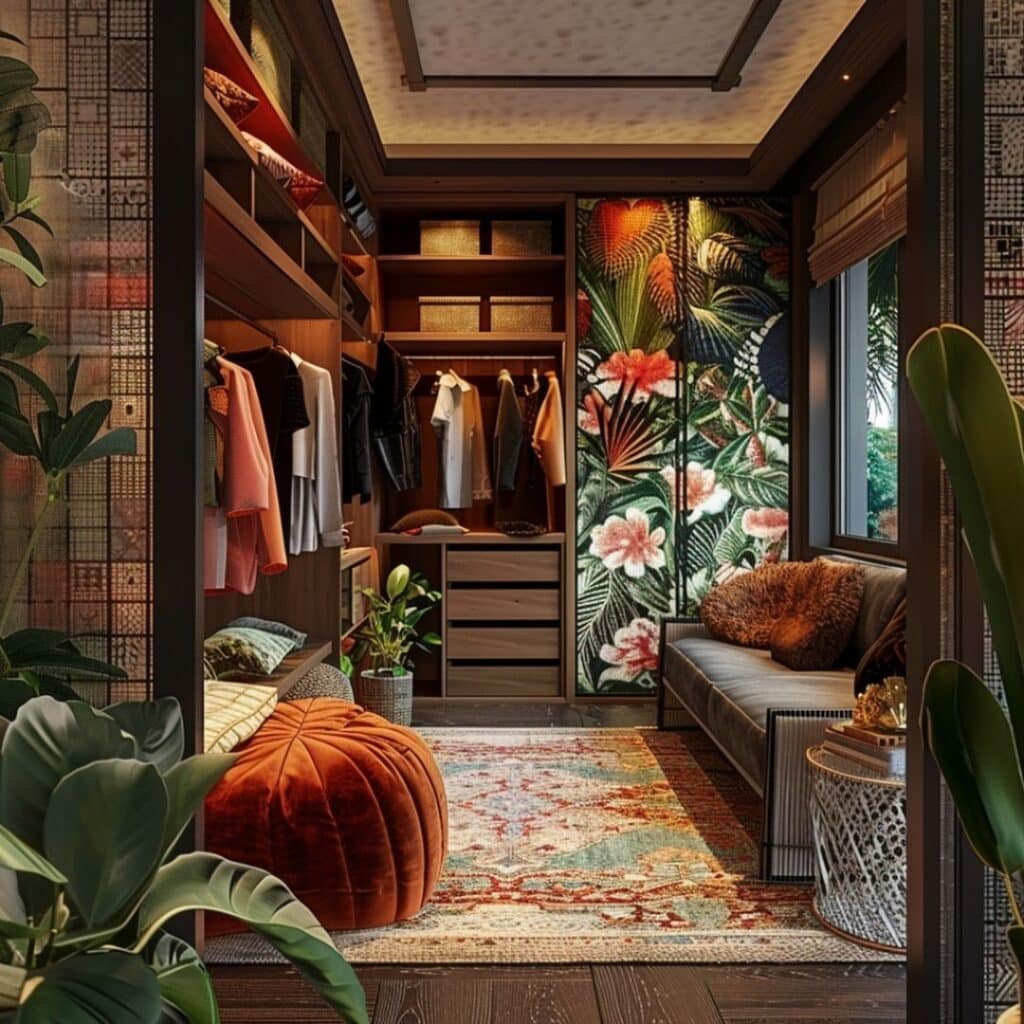
#2. Garden Oasis Studio Apartment
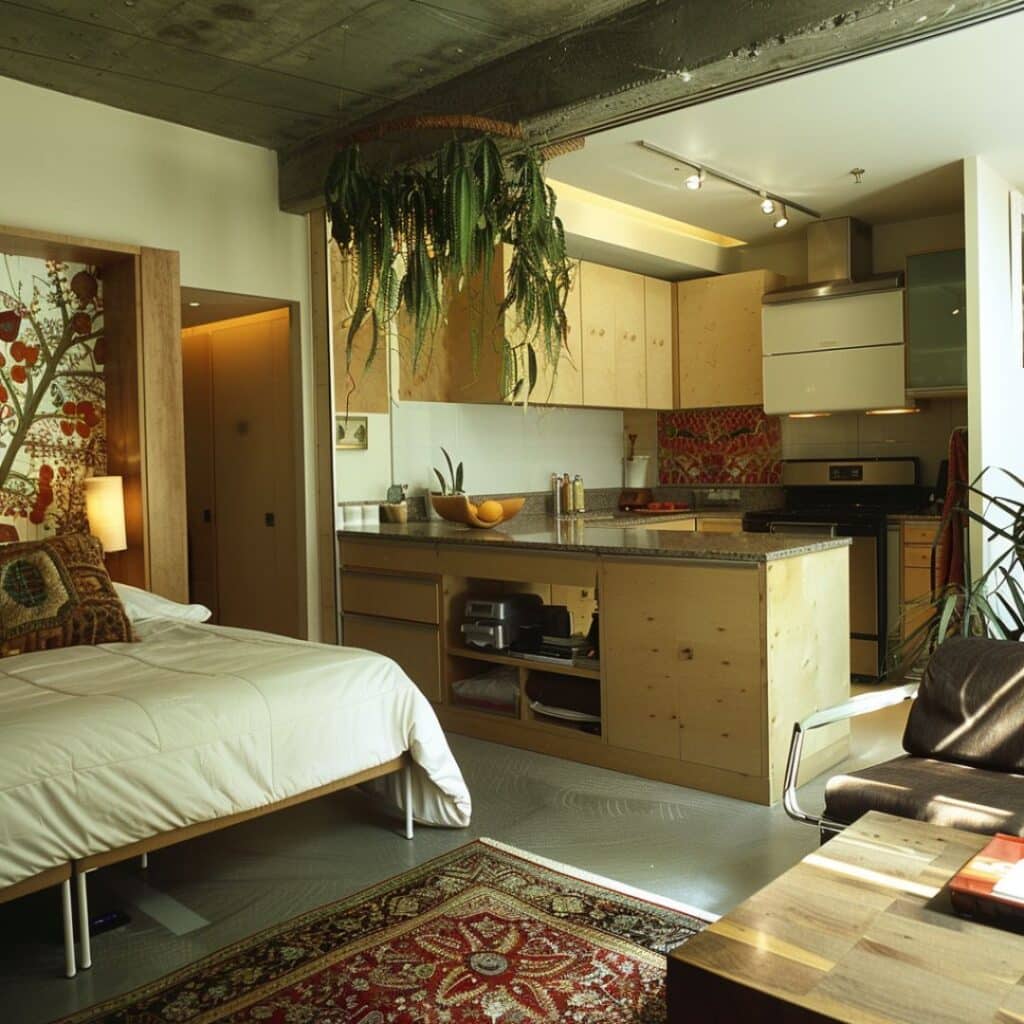
#3. Garden Oasis Open Kitchen Living Room

#4. Garden Oasis Open Kitchen Living Room Interior Design
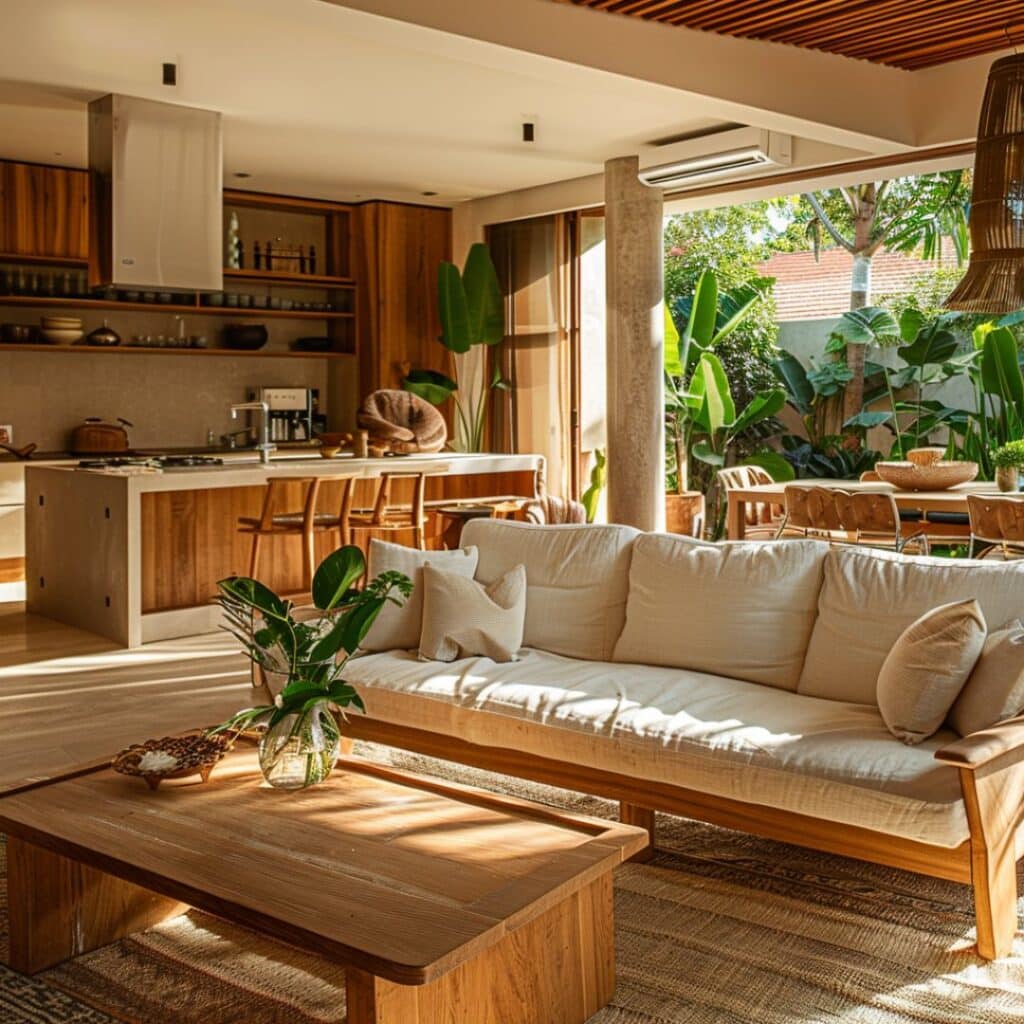
#5. Garden Oasis Living Room
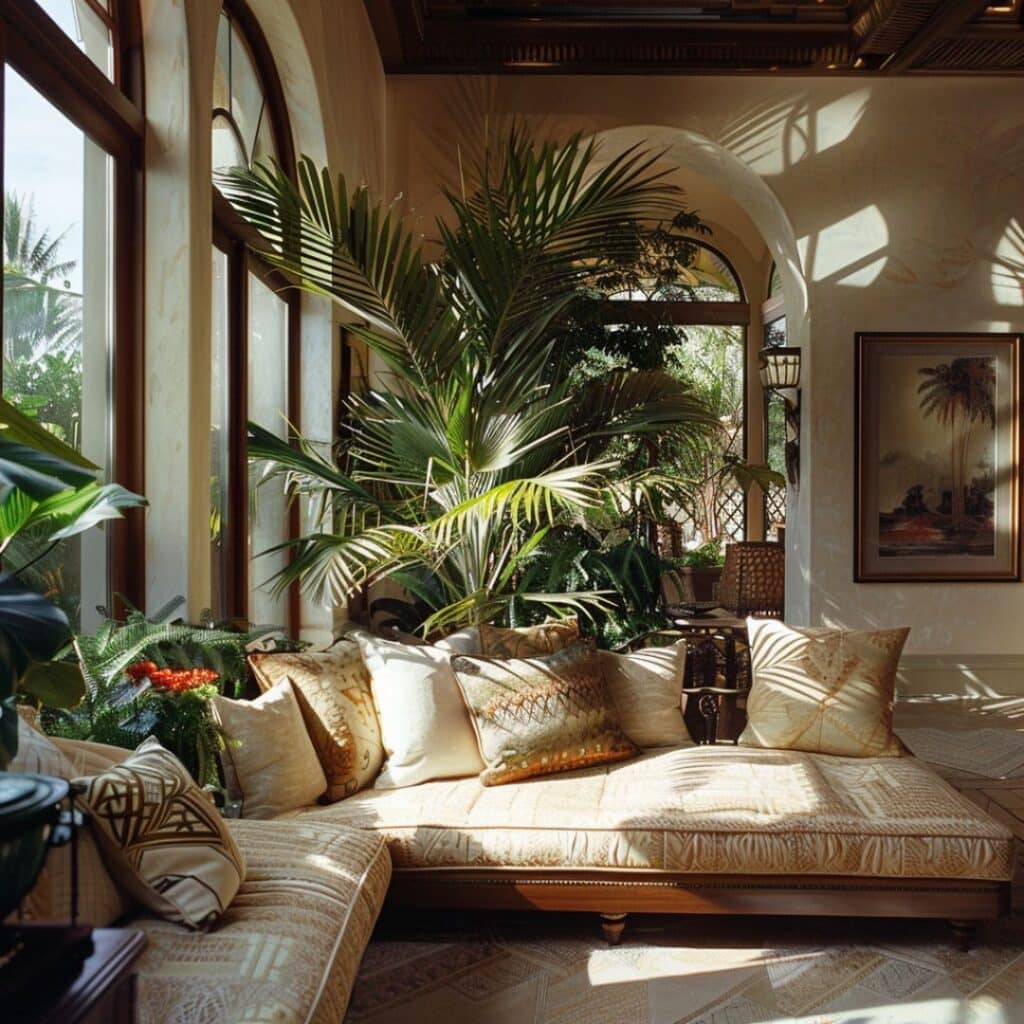
#6. Garden Oasis Laundry Room
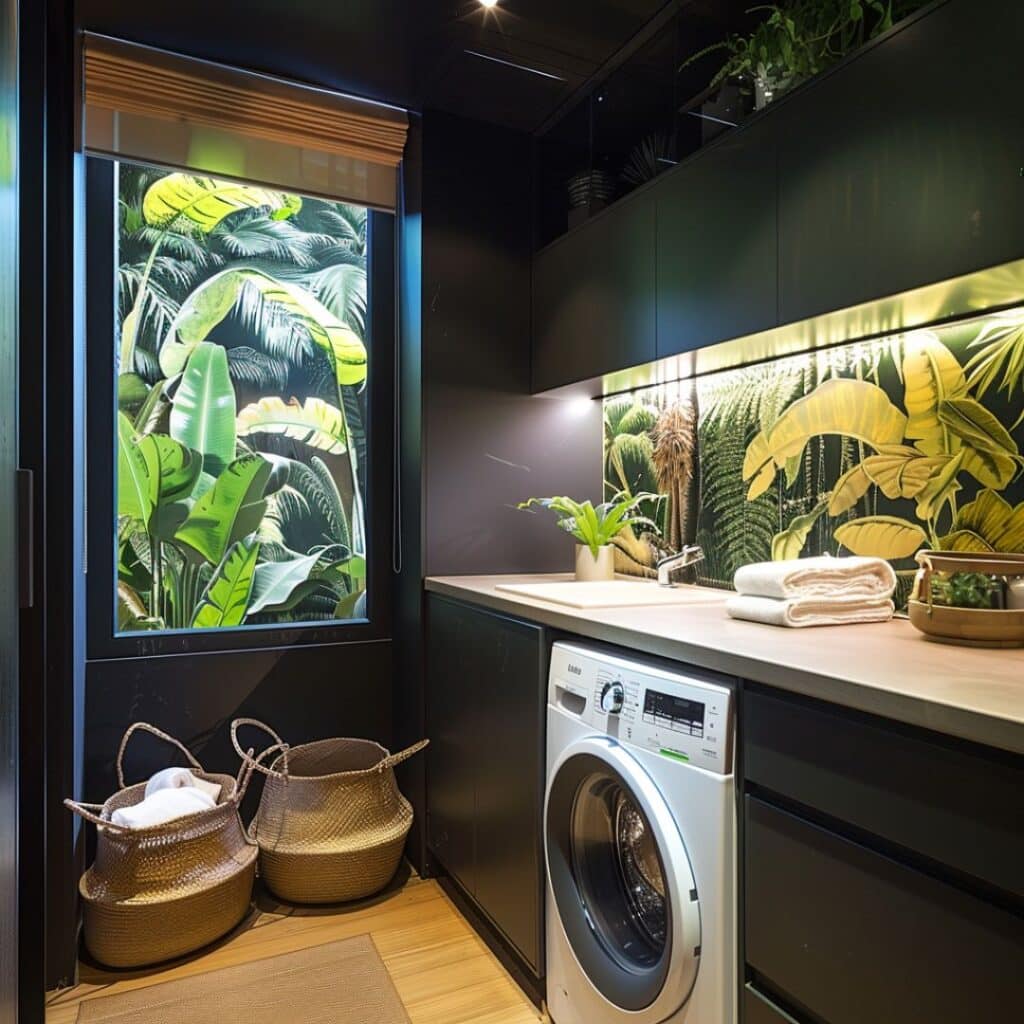
#7. Garden Oasis Laundry Room Interior Design

#8. Garden Oasis Kitchen

#9. Garden Oasis Kids Room
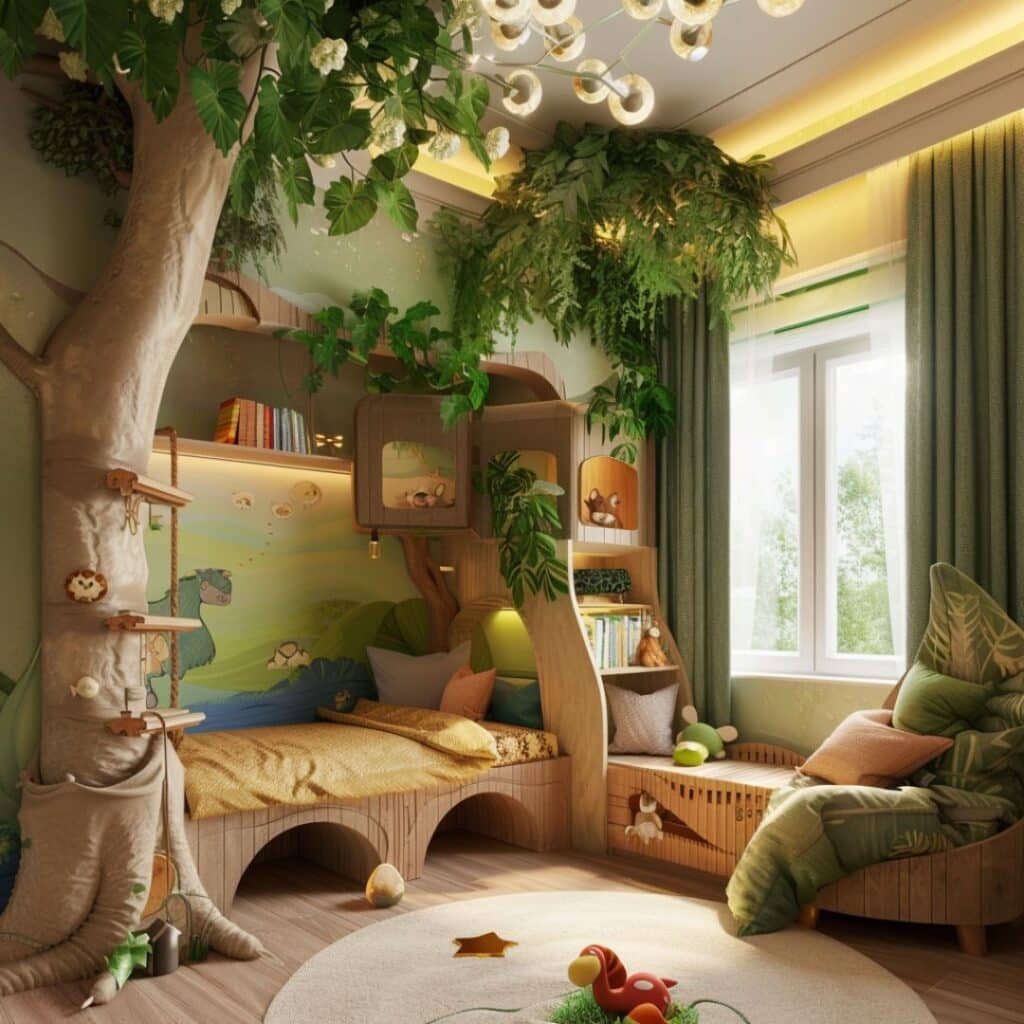
#10. Garden Oasis Guest Bedroom

#11. Garden Oasis Guest Bedroom Interior Design
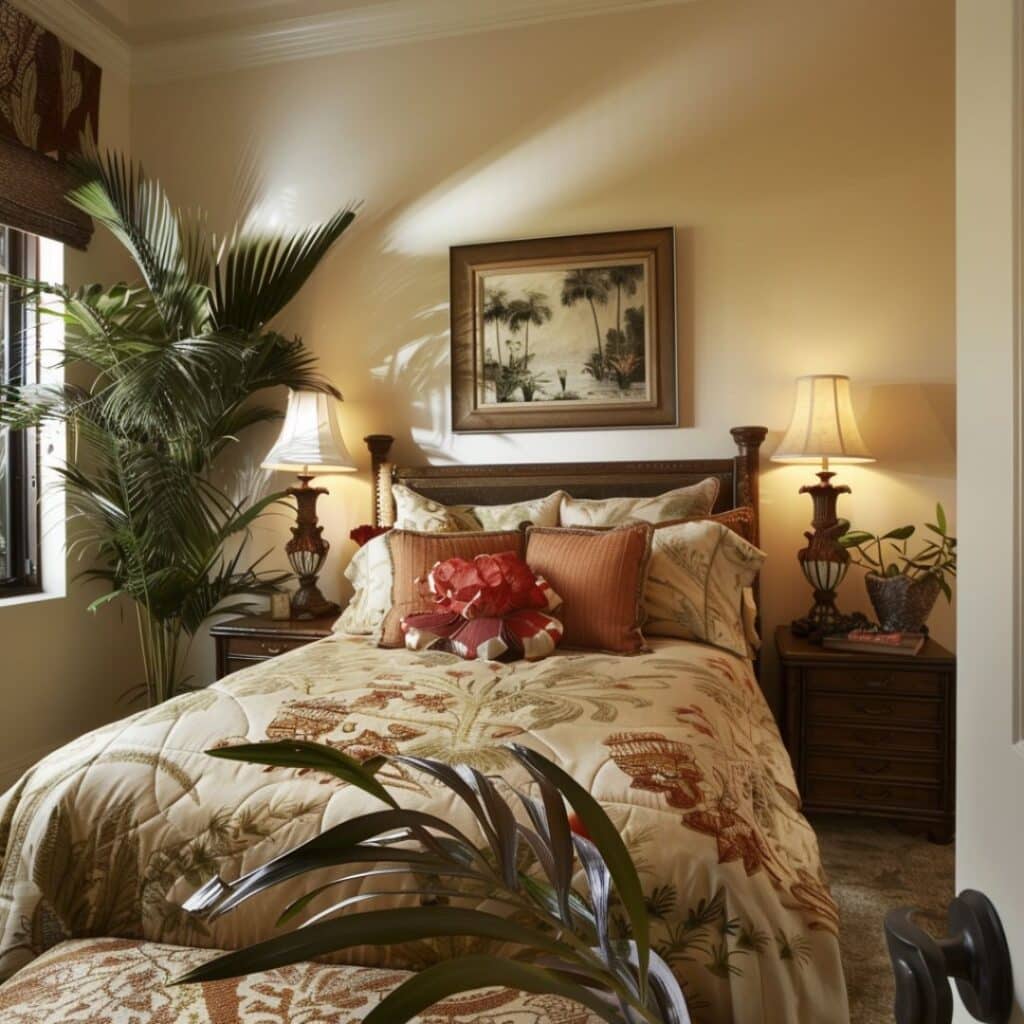
#12. Garden Oasis Dining Room
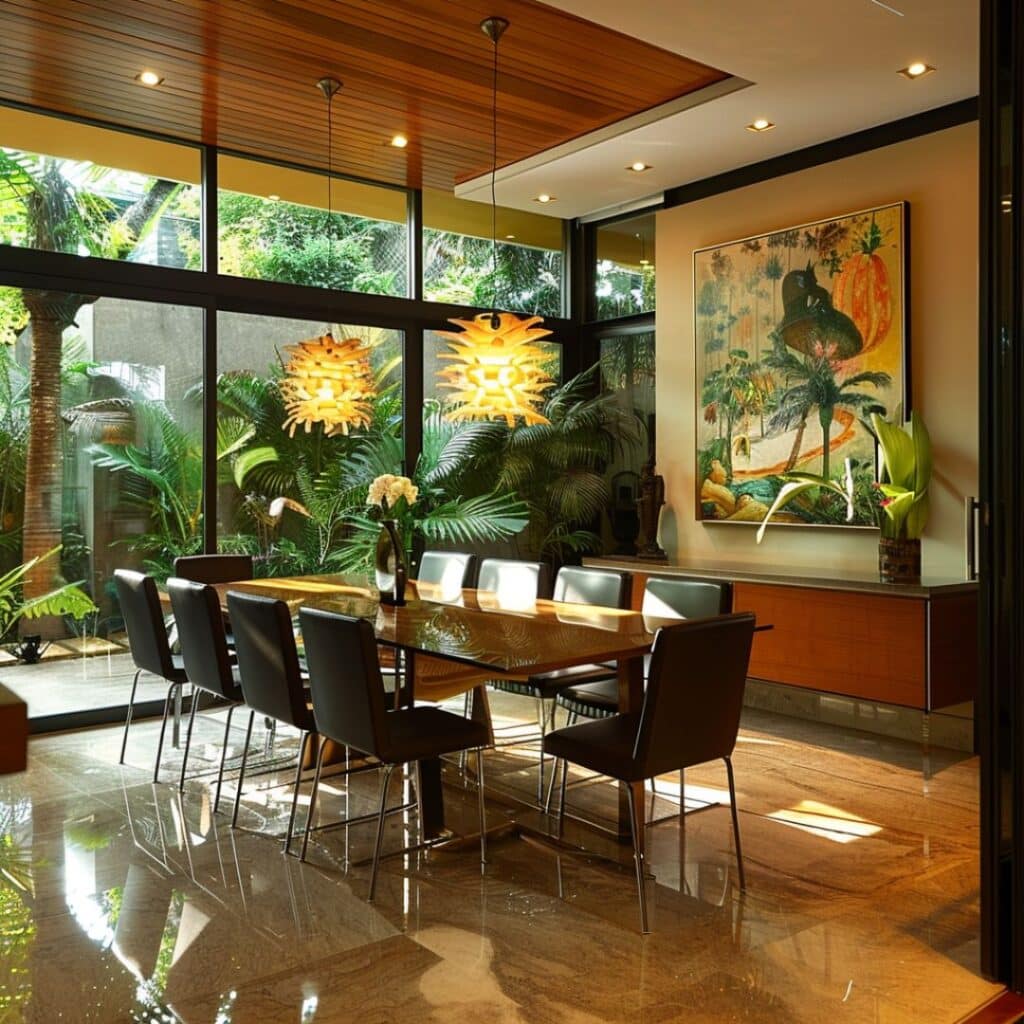
#13. Garden Oasis Bedroom
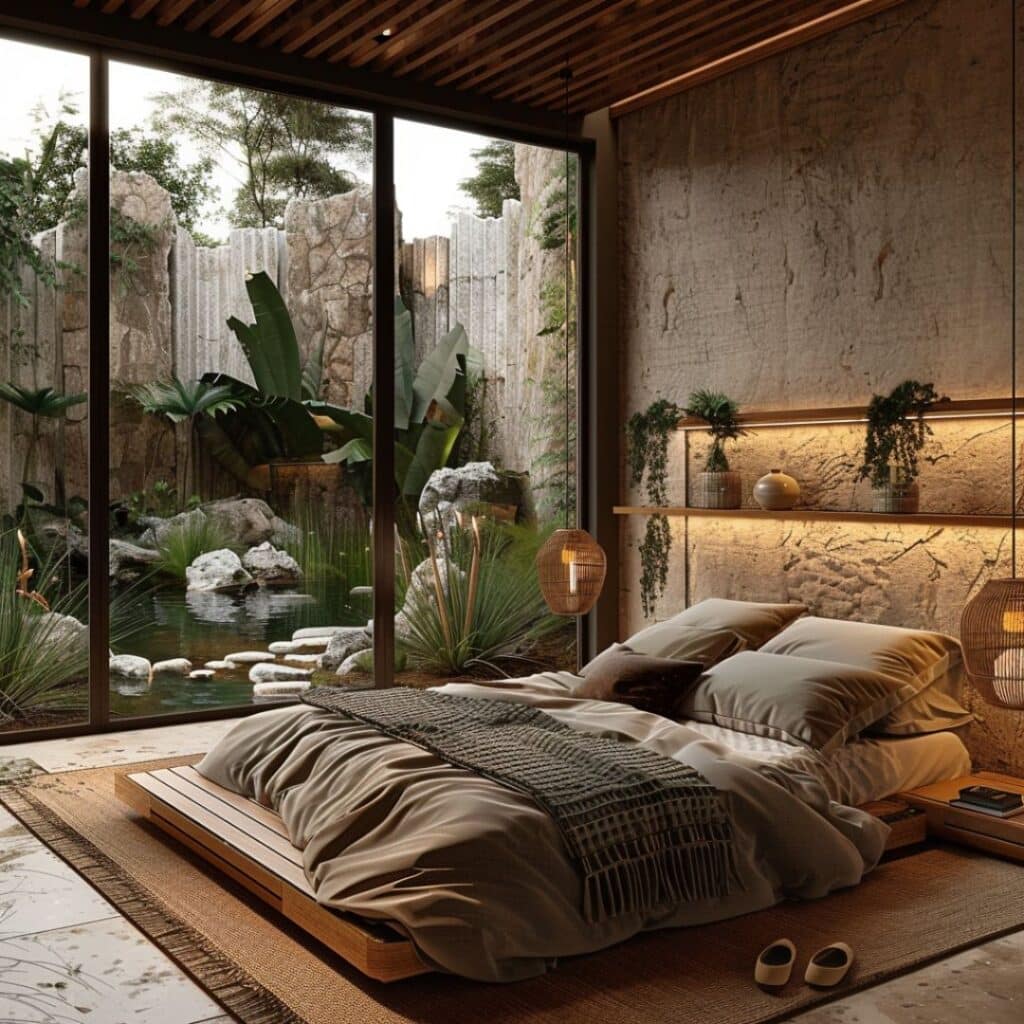
#14. Garden Oasis Bathroom
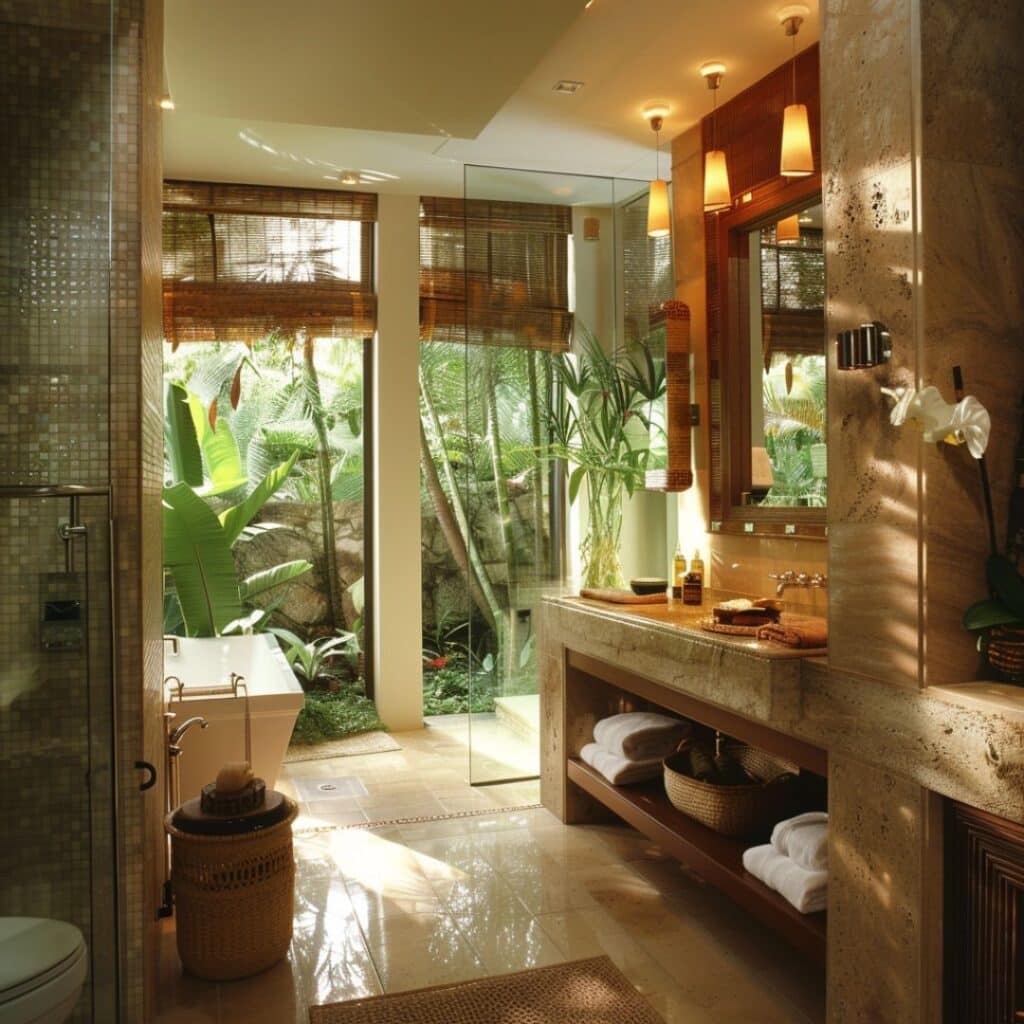
Understanding Garden Oasis Interior Design
Garden Oasis interior design brings nature’s tranquility indoors. This style uses natural elements to create serene, refreshing spaces.
Defining Garden Oasis
Garden Oasis design integrates greenery and organic materials into interiors. Think potted plants, wooden furniture, and stone accents. This approach fosters a harmonious environment that’s calming yet invigorating, similar to the principles found in Tropical interior design.
Key Features of Garden Oasis
Natural Elements: Greenery like ferns or succulents add life to rooms. Wooden tables and stone textures evoke the outdoors.
Earthy Colors: Shades of green, brown, and beige dominate this palette. These colors mimic natural landscapes.
Organic Materials: Furniture made from bamboo or rattan enhances the natural feel. Cotton or linen fabrics offer comfort while maintaining an earthy vibe.
This design creates peaceful sanctuaries within your home by blending these features seamlessly.
Designing Your Indoor Garden Oasis
Creating an indoor garden oasis introduces tranquility and vitality to your home. Focus on integrating natural elements and thoughtful design choices, much like the principles found in Tropical Modern interior design.
Choosing the Right Space
Identify a spot with ample light for your indoor garden. Consider areas near windows or spaces with skylights. Ensure easy access to water for plant care.
Selecting Plants for Your Oasis
Choose plants that thrive indoors, like ferns and succulents. Opt for varying heights and textures to add visual interest. Use hanging plants or trailing varieties for vertical space enhancement.
The Role of Furniture in Garden Oasis Design
Furniture plays a crucial role in creating a garden oasis interior. By choosing pieces that harmonize with natural elements, you can enhance the serene ambiance.
Types of Furniture Suited for Garden Oasis
Opt for wooden furniture like teak or oak. These materials add warmth and complement greenery. Rattan and bamboo furniture are excellent choices too, providing an organic feel. Upholstered pieces should use fabrics such as cotton or linen to maintain a natural aesthetic.
Consider multi-functional furniture examples include benches with storage or tables with plant holders integrated into the design.
Positioning Furniture for Aesthetic and Practicality
Place seating near windows or under skylights to maximize natural light exposure. Use corner spaces for tall plants paired with smaller furniture items like stools or side tables to create cozy nooks.
Arrange larger pieces centrally but keep pathways clear to facilitate movement through the space effortlessly.
Lighting and Accessories to Enhance Your Oasis
Lighting and accessories can transform your Garden Oasis into a serene retreat. Use natural light sources and carefully chosen decor items to maximize the calming effect.
Finding the Ideal Light Conditions
Natural light enhances the tranquility of a garden-inspired space. Position seating near windows to capture daylight. Use sheer curtains or blinds that allow sunlight while providing privacy.
In areas lacking natural light, consider full-spectrum LED bulbs. These mimic daylight and promote a lively environment. Floor lamps with adjustable heads can direct light where needed most.
Decorative Elements That Bring Life
Select accessories that reflect nature’s beauty. Incorporate items like stone sculptures, driftwood pieces, and ceramic planters filled with lush greenery for an organic feel.
Add textiles in earthy tones for warmth and comfort. Think of throw pillows in shades of green or brown, woven baskets, and rugs made from jute or sisal to complement the natural theme effectively.
Using these strategies will create an inviting Garden Oasis interior design by blending lighting solutions with nature-inspired accessories seamlessly.
Maintaining Your Indoor Garden
Creating an indoor garden enhances your living space, but it requires regular upkeep, much like the principles in Green Living interior design. Pay attention to light, water, and plant health for a thriving environment.
Regular Care Tips
Watering plants correctly is crucial. Over-watering or under-watering can harm them. Check soil moisture before watering. Use pots with drainage holes to prevent root rot.
Light exposure varies by plant type. Place sun-loving plants near windows with direct sunlight. For low-light plants, use indirect light sources or full-spectrum LED bulbs.
Dust leaves monthly to maintain photosynthesis efficiency. Use a damp cloth and gently wipe each leaf’s surface.
Tackling Common Challenges
Pests such as aphids and spider mites can infest indoor gardens. Inspect plants weekly for signs of pests or disease and treat promptly using organic insecticides or natural remedies like neem oil.
Temperature fluctuations can stress plants. Keep the room temperature stable, ideally between 65°F and 75°F.
If you notice yellowing leaves, it may indicate nutrient deficiencies or over-watering issues. Adjust watering habits and consider adding a balanced fertilizer to the soil mix quarterly.

